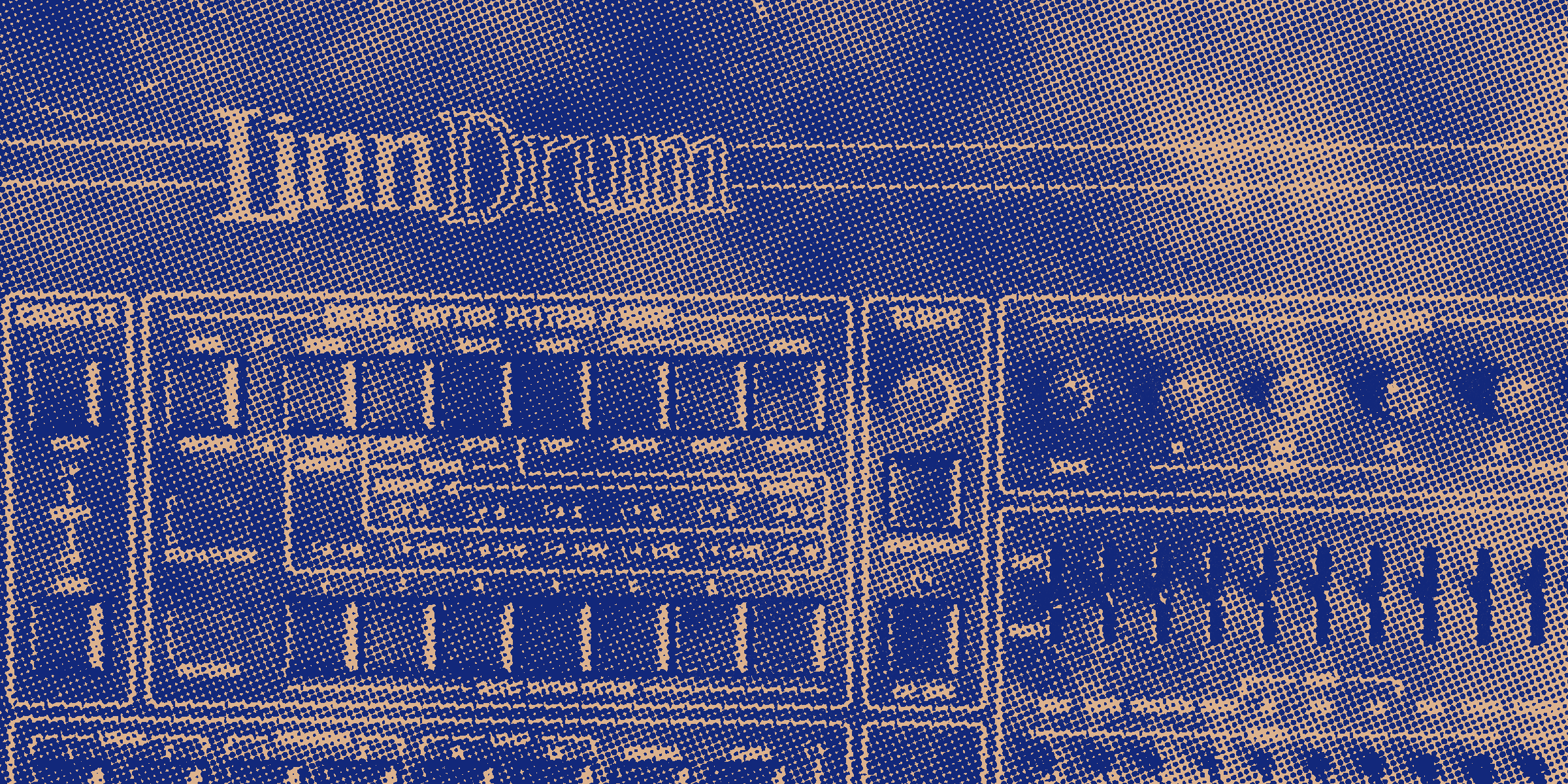The LinnDrum (the nicest drum machine from the nicest man in music)
A pre-cursor to the drum machines and samplers of the future, the LinnDrum was a breakthrough, an icon, and a timeless source of rhythm.

The LinnDrum, a digital drum machine that revolutionized the music industry in the early 1980s, stands as a testament to the transformative power of technology in the realm of music production. Created by Roger Linn, an American designer of electronic musical instruments, the LinnDrum brought a new level of realism and flexibility to the world of electronic percussion, forever altering the landscape of modern music. Let's dig into some of the rich history of the LinnDrum, exploring its inception, technical attributes, impact on music production, and enduring legacy in the field of electronic music.
Inception and Development
The story of the LinnDrum begins with its creator, Roger Linn. An accomplished guitarist and songwriter, Linn was no stranger to the world of music. However, his true passion lay in the intersection of music and technology. This passion led him to establish Linn Electronics in 1979, a company dedicated to the development of innovative musical instruments.
The LinnDrum, also known as the LM-2, was not Linn's first foray into drum machine design. His initial creation, the LM-1 Drum Computer, was the first drum machine to use digital samples of acoustic drums, a revolutionary concept at the time. However, its high cost made it inaccessible to many musicians. Linn recognized the need for a more affordable, yet equally powerful alternative. Thus, the LinnDrum was born.
Launched in 1982, the LinnDrum was designed to be a more cost-effective and feature-rich successor to the LM-1. It incorporated several advancements over its predecessor, including additional sound options and greater programming capabilities. These improvements were made possible by the rapid technological advancements of the early 1980s, particularly in the field of digital sound sampling.
Technical Aspects
The LinnDrum was a marvel of its time, offering features that set it apart from other drum machines. It came with 15 drum sounds, including a snare, kick, hi-hat, cymbals, congas, and more. These sounds were sampled at a higher bitrate than the LM-1, resulting in better audio quality. One of the LinnDrum's most notable features was its programmability. Users could create and store their own drum patterns, allowing for a high degree of customization. This was a significant improvement over previous drum machines, which often came with preset rhythms that couldn't be altered.
The LinnDrum also offered dynamic articulation, a feature that allowed the volume of the drum sounds to vary depending on how hard a note was struck on the machine's pads. This brought a level of expressiveness and realism to electronic percussion that was previously unheard of.
Despite these advanced features, the LinnDrum was designed with user-friendliness in mind. Its interface was intuitive, making it accessible to both professional musicians and novices alike.
Impact on Music Production
The LinnDrum's impact on music production was profound. Its high-quality drum sounds and programmability made it a popular choice among musicians and producers. It found its way into various music genres, from pop and rock to R&B and electronic music.
Notable artists and bands like Prince, The Human League, and Genesis were known to use the LinnDrum in their music. The machine's distinctive sounds can be heard in numerous hit songs from the 1980s, testament to its widespread adoption and influence.
The LinnDrum also played a significant role in the rise of home studios. Its affordability and ease of use made it possible for musicians to produce high-quality drum tracks from the comfort of their own homes, a trend that continues to this day.
Legacy and Modern Usage
The LinnDrum's influence extends far beyond the 1980s. Its impact can still be felt today, in the realm of electronic music production and beyond. The LinnDrum set a new standard for what a drum machine could be, influencing the design of subsequent drum machines and music production software.
Many modern drum machines and digital audio workstations (DAWs) have features that were first introduced with the LinnDrum, such as sample-based drum sounds and dynamic articulation. Some even include LinnDrum samples as part of their sound libraries, allowing a new generation of musicians to incorporate the iconic sounds into their music.
In addition to its influence on music technology, the LinnDrum also left a lasting mark on music itself. The drum patterns and sounds that were popularized by the LinnDrum can be heard in countless songs across various genres, from the synth-pop hits of the 80s to the electronic dance music of today.
Despite the advent of more advanced music technology, the LinnDrum remains a beloved piece of music history. Vintage LinnDrum machines are highly sought after by collectors and musicians alike, and its distinctive sounds continue to be used in music production.
Historical Context
The early 1980s was a time of significant technological advancement in the music industry. The advent of digital technology was beginning to change the way music was produced and consumed. Synthesizers and drum machines were becoming more common in recording studios, and the sounds they produced were becoming more prevalent in popular music.
In this context, the LinnDrum emerged as a groundbreaking instrument. It was one of the first drum machines to use digital samples of acoustic drums, which offered a level of realism that was unprecedented at the time. This innovation, combined with the LinnDrum's programmability and user-friendly interface, made it an attractive tool for musicians and producers.
Case Studies
Prince and the LinnDrum
Prince's 1984 album "Purple Rain" is a prime example of the LinnDrum's impact on popular music. Prince, known for his innovative and eclectic musical style, made extensive use of the LinnDrum throughout the album. The hit song "When Doves Cry" features the LinnDrum prominently. The tight, punchy drum sounds, particularly the iconic LM-2 snare, provided a rhythmic foundation that was both driving and distinctive. This use of the LinnDrum helped to create a sonic landscape that was fresh and unique, contributing to the song's chart-topping success and enduring popularity.
The Human League and the LinnDrum
The British synth-pop band The Human League also made notable use of the LinnDrum. Their 1981 album "Dare" is often cited as a landmark album in the synth-pop genre, and the LinnDrum played a significant role in shaping its sound. Songs like "Don't You Want Me" and "Love Action (I Believe in Love)" feature the LinnDrum's electronic percussion sounds, which, when combined with the band's synthesizers, created a futuristic sound that defined the band's style and left a lasting impact on the genre.
Critical Reception and Controversies
Upon its release, the LinnDrum was lauded for its high-quality sound and innovative features. However, it also faced criticism from some quarters. Some musicians and critics felt that the use of drum machines like the LinnDrum was leading to a loss of musicianship, as they allowed non-drummers to program complex drum parts.
There were also debates about the impact of drum machines on the music industry. Some argued that they were making live drummers obsolete, while others saw them as tools that opened up new possibilities for creativity and innovation. Despite these controversies, the LinnDrum's popularity and influence continued to grow.
Comparative Analysis
When compared to other drum machines of its era, the LinnDrum stood out for its use of digital samples. The Roland TR-808 and TR-909, a pair of iconic drum machine released around the same time, used analog synthesis to generate their sounds. While the TR-808 and TR-909 sounds were influential in their own right, they had a more artificial, electronic quality. The LinnDrum, on the other hand, offered a more realistic drum sound, making it a preferred choice for many musicians.
In the context of modern music production, the LinnDrum's influence is evident in the design of contemporary drum machines and digital audio workstations (DAWs). Features that were innovative in the LinnDrum, such as sample-based drum sounds and dynamic articulation, are now standard in modern music production tools. Many DAWs even include LinnDrum samples in their sound libraries, attesting to the enduring appeal of its distinctive sounds.
However, while the LinnDrum was groundbreaking in its time, it is limited in comparison to the capabilities of modern music production tools. Today's drum machines and DAWs offer a much wider range of sounds and more advanced programming capabilities. Nonetheless, the LinnDrum remains a beloved instrument for its intuitive interface, unique sound, and historical significance.
Conclusion
The LinnDrum, with its groundbreaking features and enduring influence, stands as a pivotal instrument in the history of music production. It not only revolutionized the way drum sounds were produced, but also democratized music production, making it more accessible to a wider range of musicians.
From its inception by the visionary Roger Linn to its widespread adoption by musicians around the world, the LinnDrum's journey is a testament to the transformative power of technology in music. Much like the MPC sampler that Linn would invent next, its legacy continues to inspire and influence the field of electronic music, proving that the LinnDrum is much more than just a drum machine—it's a piece of music history.
As we look to the future, it's clear that the LinnDrum's impact will continue to be felt. Whether through the sounds it introduced, the technologies it pioneered, or the artists it inspired, the LinnDrum's beat goes on.


